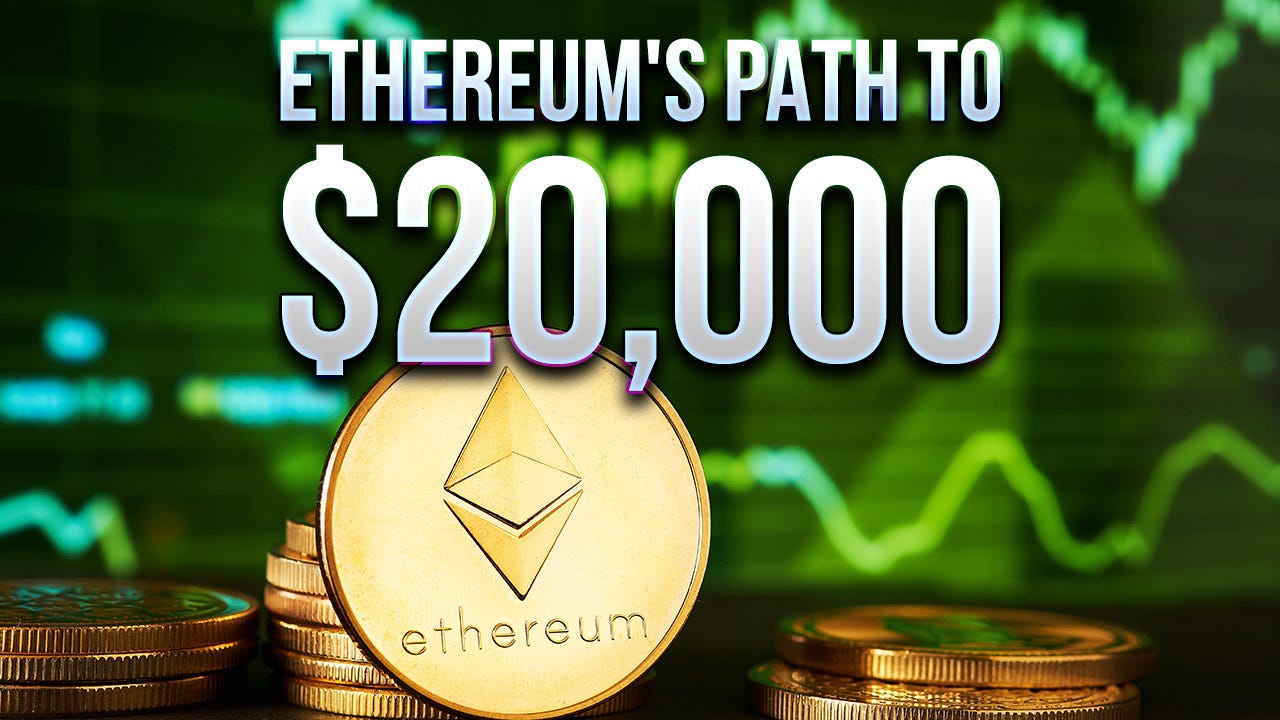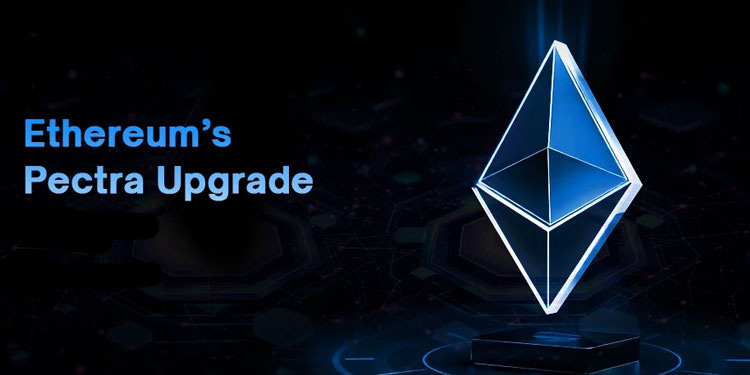The crypto world is buzzing with bold predictions for Ethereum. While analysts like Tom Lee grab headlines with five-figure price targets and institutional capital floods into ETH ETFs, the real story behind Ethereum's potential $20,000 trajectory isn't just about market dynamics—it's about a technological transformation happening right now.
Wall Street's New Love Affair
Tom Lee's Bold Vision
Tom Lee, Fundstrat's co-founder, has emerged as Ethereum's biggest institutional champion. Using EBITDA-based valuation models similar to those applied to companies like Circle, Lee estimates ETH could be worth up to $15,000 in the medium term, with some projections reaching $30,000. He calls Ethereum "Wall Street's preferred choice" for blockchain infrastructure, pointing to JPMorgan's stablecoin and Robinhood's tokenization initiatives as evidence.
Lee's confidence isn't just theoretical—he's put his money where his mouth is. As chairman of BitMine Immersion Technologies, he's overseeing a $250 million bet on Ethereum, with the company already accumulating over 300,000 ETH worth well over $1 billion at current prices.
The Broader Consensus
Lee isn't alone. Arthur Hayes, co-founder of BitMEX, predicts that ETH will reach $10,000 in 2025, while expert panel predictions show an average peak price target of $5,300 for 2025, with some analysts forecasting highs of $14,260.
Institutional FOMO: The Money Is Moving
Record-Breaking ETF Inflows
The numbers tell a compelling story. Spot Ether ETFs recorded nearly $2.4 billion in the past six trading days, with BlackRock's ETHA capturing 75% of total inflows. Recent data shows Ethereum ETFs recording over $726 million in daily net inflows—outpacing Bitcoin ETFs for the first time.
This isn't just retail excitement—it's institutional validation. BlackRock's iShares Ethereum ETF has crossed $10 billion in assets under management in just one year, becoming the third-fastest ETF to reach this milestone.
Corporate Treasury Adoption
We're seeing the emergence of the "MicroStrategy model" for Ethereum. Public companies now hold over 865,000 ETH, a jump of more than 545,000 ETH in a single month. Three major firms—BitMine, SharpLink Gaming, and Bit Digital—now control roughly 682,000 ETH, or about half a percent of the circulating supply.
The Stablecoin Connection
Lee describes this as the "ChatGPT moment" for stablecoins, noting that Ethereum hosts more than 60% of all tokenized real-world assets and over 50% of the almost $250 billion stablecoin supply. With predictions that stablecoins could grow to over $2 trillion, this represents exponential growth in usage for Ethereum.
The Technical Revolution: Where Real Value Lives
While market dynamics create headlines, Ethereum's path to $20,000 is fundamentally driven by technological breakthroughs transforming the network into a high-speed, low-cost commerce platform.
Pectra: The Foundation Is Live
Ethereum's Pectra upgrade went live on May 7, 2025, marking the blockchain's most significant overhaul since the Merge in 2022. This isn't incremental improvement—it's laying groundwork for Ethereum's transformation into a commerce-ready platform.
Transaction Speed Revolution
Ethereum's current data capacity translates to approximately 210 transactions-per-second (TPS). With the Pectra upgrade, this value significantly increases to about 420 TPS. By doubling the number of blobs that can be processed per block, Ethereum can handle significantly more data and process it more efficiently.
Smart Accounts: The UX Breakthrough
EIP-7702 enables externally owned accounts (EOAs) to temporarily execute smart contract code, allowing transaction batching, sponsored gas fees, and social recovery features. Users can now pay transaction fees with stablecoins instead of ETH and recover wallets without seed phrases, removing significant barriers to mainstream adoption.
Fusaka: The Scalability Explosion
The Fusaka upgrade is scheduled for early November 2025, representing Ethereum's boldest scaling move yet.
8x Data Capacity Increase
Fusaka's centerpiece is increasing blob capacity from 6 to 48 blobs per block—an 8x improvement that could drive Layer 2 transaction fees below $0.01. PeerDAS (Peer-to-Peer Data Availability Sampling) means nodes only download small data chunks instead of entire blobs, allowing Ethereum to safely increase data capacity per block.
The Commerce Layer Emergence
Layer 2 networks like Arbitrum, Optimism, and Base now process 3-5x more transactions than Ethereum mainnet. With Fusaka's blob expansion, these networks can scale dramatically while maintaining security through Ethereum's base layer, enabling micro-transactions costing fractions of a penny.
Verkle Trees Revolution
Fusaka introduces Verkle trees, a more efficient state management structure that replaces the Merkle Patricia Trie. This change will reduce state size, enable stateless clients, and make running a full node more accessible.
The $20,000 Pathway: Convergence of Forces
When we combine institutional demand with technical transformation, a path to $20,000 becomes logical:
Supply Dynamics: Approximately 53% of all ETH in circulation is liquid, with increasing amounts being staked or held by institutions, thereby contracting the available supply.
Demand Acceleration: ETF inflows, corporate treasury adoption, and stablecoin ecosystem growth create sustained buying pressure.
Utility Explosion: Technical upgrades enable entirely new use cases, creating positive feedback loops of adoption and value creation.
The Commerce Layer Thesis: Ethereum isn't just becoming a better blockchain—it's becoming foundational infrastructure for global digital commerce. Considering that the global payments market exceeds $2 trillion annually, capturing even a small fraction could justify valuations far beyond current levels.
Reality Check
Risks remain: complex technical execution, competitive pressure from Solana and others, regulatory uncertainty, and crypto market volatility. However, Ethereum's security-first approach builds lasting value for its $ 400 billion+ economy.
Beyond FOMO to Fundamentals
Yes, institutional FOMO is real, and analysts like Tom Lee make compelling valuation arguments. But the real driver of Ethereum's potential $20,000 path isn't market psychology—it's the emergence of a platform that could fundamentally reshape global commerce.
The question isn't whether Ethereum can reach $20,000. The question is whether we're ready for a world where Ethereum becomes the foundational layer for global digital commerce. Based on the technology being built today, that future is closer than most people think.
- NFA






